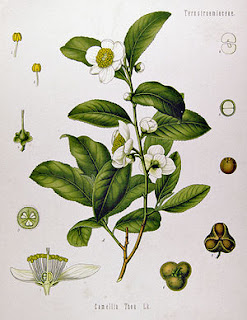
China is a country known as "world's oldest and continuous civilizations", consisting of states and cultures dating back more than six millennia. It also has its diverse cuisine and a unique tea culture which the country is known for worldwide.
The people of china preferably drink tea in between meals or at the time of different meals for maintaining a sound health and simple pleasure. Chinese tea mainly consists of tea leaves, processed using various methods adopted from ancient China. Tea was first discovered by a Chinese Emperor - Shennong in 2737 BCE , it is said that incidently "a leaf from a Camellia sinensis tree had fallen into the water which the emperor was boiling, and it resulted as change in the flavor and color of the water which eventually led to the invention of tea. The ancient Chinese used tea leaves for medical purposes and thereon the Chinese learned to grow tea plants and use their leaves to make various types tea.
It is a well known fact that tea culture is deeply rooted into the history and culture of China and its cuisine. Tea, by default is pondered as one of the 7 basic necessities of the lives of people in China, apart from tea other essential elements are firewood, rice, oil, salt, sauce and vinegar.
Tea is manly dissevered into four categories:-
1) White,
2) Green,
3) Oolong,
4) Black.
Some other varieties are as follows:-
1) Green tea
2) White tea
3) Black tea
4) Oolong tea
5) Pu-erh tea
6) Flower tea
8) Yellow tea
9) Pressed tea
10) Quick tea
11) Medicinal tea
12) Kudin tea
13) Red tea
14) Scented tea
15) Chrysanthemum tea.
Almost all of the above mentioned varieties of tea come from the same parent plant namely "Camellia sinensis plant. The other famous tea such as the "Chinese flower tea" is extremely popular but it is not a true tea type. Most of the Chinese tea produced is consumed within the country and is hardly exported. Green tea is one such variety of Chinese tea which has gained a lot of fame worldwide and is exported in large volumes, bringing in return a lot of revenue as being the most popular type of tea used in China.
Among these main stream varieties of tea in china, lie a vast number of their sub-varieties and are estimated to be more than a 1000 sub-varieties. These variations occur mainly due to the different regions where tea plantation is practised and also because of the diverse climatic conditions.

Tea leaf selection
1) The highest grade white tea, yellow tea and green tea are made from tender tea shoots picked early spring.
2) The more oxidised tea such as red tea or oolong tea are made from more matured leaves.
3) The highly regarded green tea Liu An Gua Pian is made from more matured leaves.
Chinese tea history
Many different types of tea were grown during each of the dynasties in China.
1) Tang Dynasty
A list of the differing grades of tea grown in the Tang Dynasty:
Premier Grade Tea: Xiazhou, Guangzhou, Huzhou, Yuezhou, Pengzhou.
Second Grade Tea: Jingzhou, Ranzhou, Changzhou, Mingzhou.
Third Grade Tea: Shouzhou, Hangzhou, Muzhou, Hengzhou, Taizhou, Xuanzhou, Yiazhou,
Fourth Grade Tea: Jinzhou, Lianzhou, Huangzhou, Sozhou, Yunzhou, Hanzhou, Meizhou.
2) Song Dynasty
Tea was an important crop during the Song Dynasty. Tea farms covered 242 counties. This included expensive tribute tea; tea from Zhejiang and Fujian provinces, where some was exported to Southeast Asian and the Arab countries.
3) Ming Dynasty
Ming dynasty scholar Wen Zhenheng's book "Zhang Wu Zhi (On Superfluous Things) chapter 12 contains description of several famous Ming dynasty teas:
a) Tiger Hill Tea and Heaven Pool Tea
b) Jie Tea
c) Liu An Tea
d) Song Luo Tea
e) Dragon Well Tea and Eyes on Heaven Tea
No comments:
Post a Comment